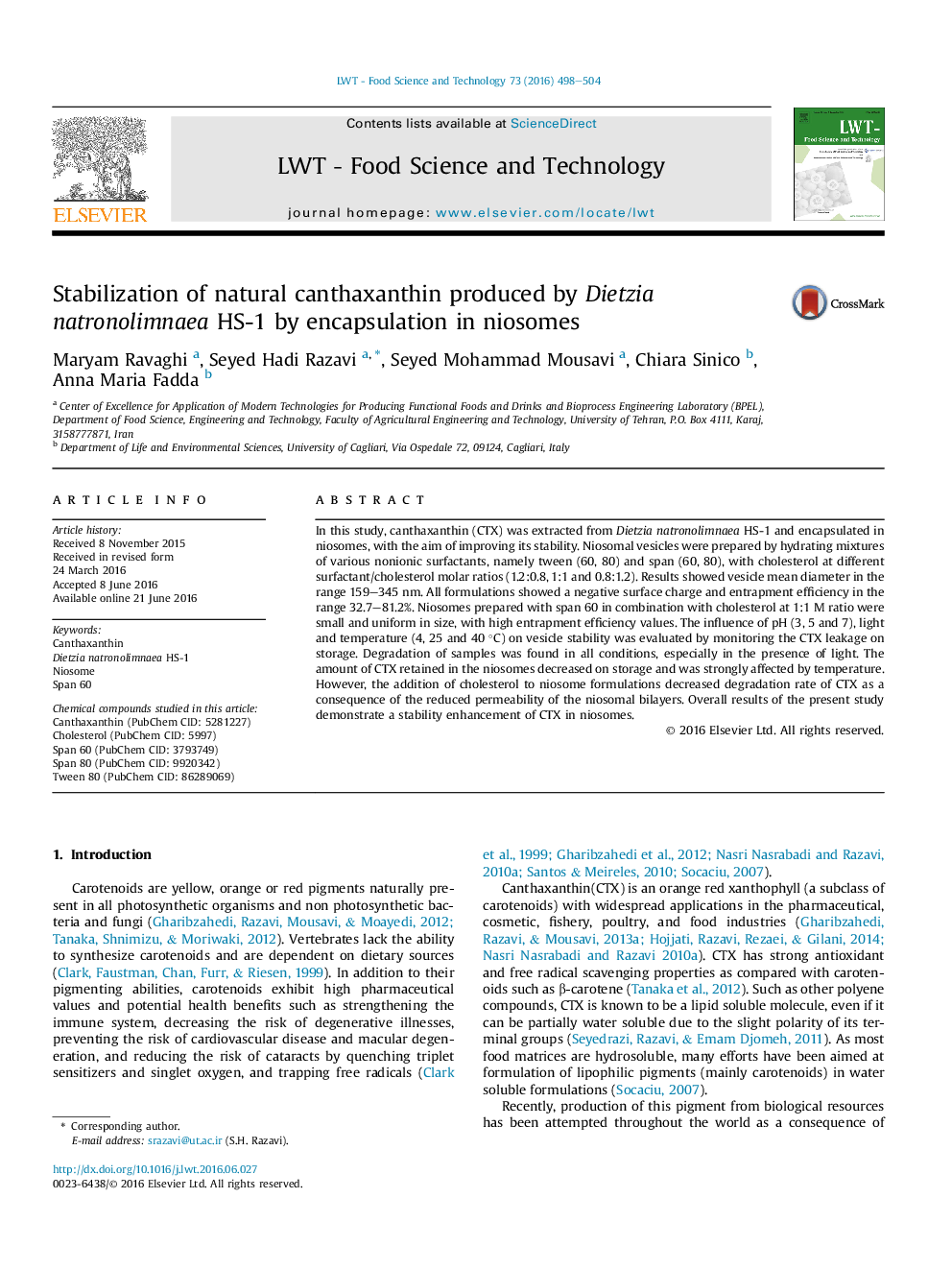| Article ID | Journal | Published Year | Pages | File Type |
|---|---|---|---|---|
| 4563389 | LWT - Food Science and Technology | 2016 | 7 Pages |
•Canthaxanthin was produced by Dietzia natronolimnaea HS-1 and encapsulated in niosomes.•Niosomes of span 60 and cholesterol (1:1 M ratio) had better properties.•They were small and uniform in size, with high entrapment efficiency.•These vesicles demonstrated a stability enhancement of entrapped canthaxanthin.
In this study, canthaxanthin (CTX) was extracted from Dietzia natronolimnaea HS-1 and encapsulated in niosomes, with the aim of improving its stability. Niosomal vesicles were prepared by hydrating mixtures of various nonionic surfactants, namely tween (60, 80) and span (60, 80), with cholesterol at different surfactant/cholesterol molar ratios (1.2:0.8, 1:1 and 0.8:1.2). Results showed vesicle mean diameter in the range 159–345 nm. All formulations showed a negative surface charge and entrapment efficiency in the range 32.7–81.2%. Niosomes prepared with span 60 in combination with cholesterol at 1:1 M ratio were small and uniform in size, with high entrapment efficiency values. The influence of pH (3, 5 and 7), light and temperature (4, 25 and 40 °C) on vesicle stability was evaluated by monitoring the CTX leakage on storage. Degradation of samples was found in all conditions, especially in the presence of light. The amount of CTX retained in the niosomes decreased on storage and was strongly affected by temperature. However, the addition of cholesterol to niosome formulations decreased degradation rate of CTX as a consequence of the reduced permeability of the niosomal bilayers. Overall results of the present study demonstrate a stability enhancement of CTX in niosomes.
